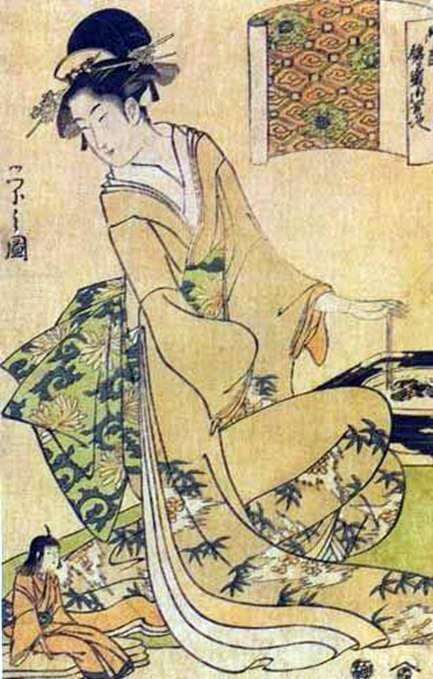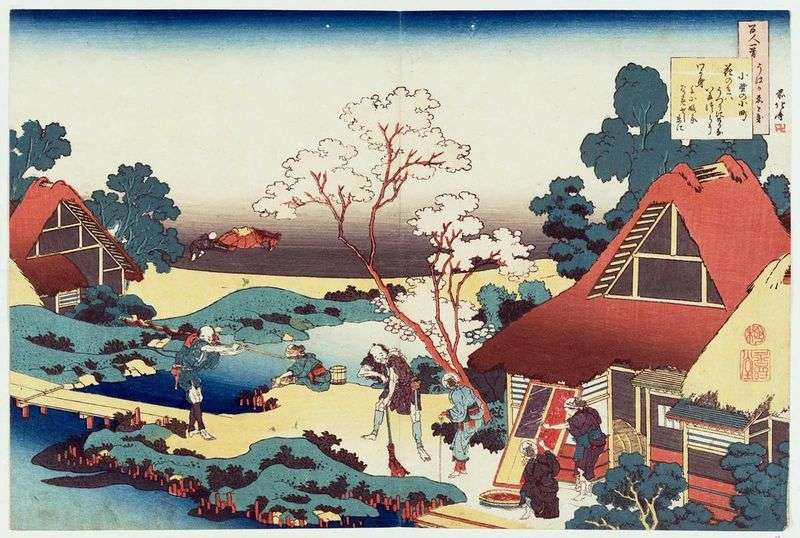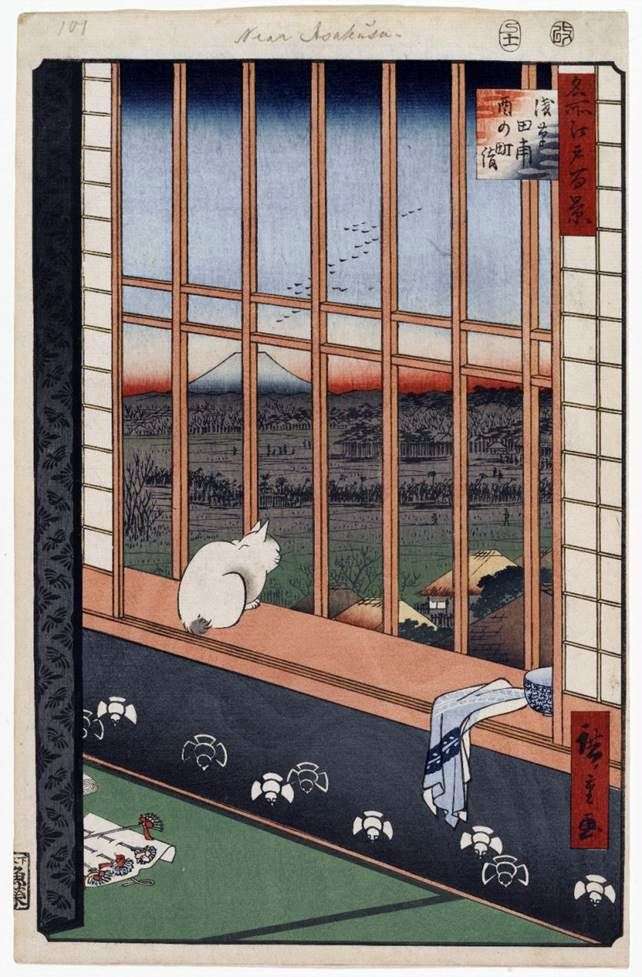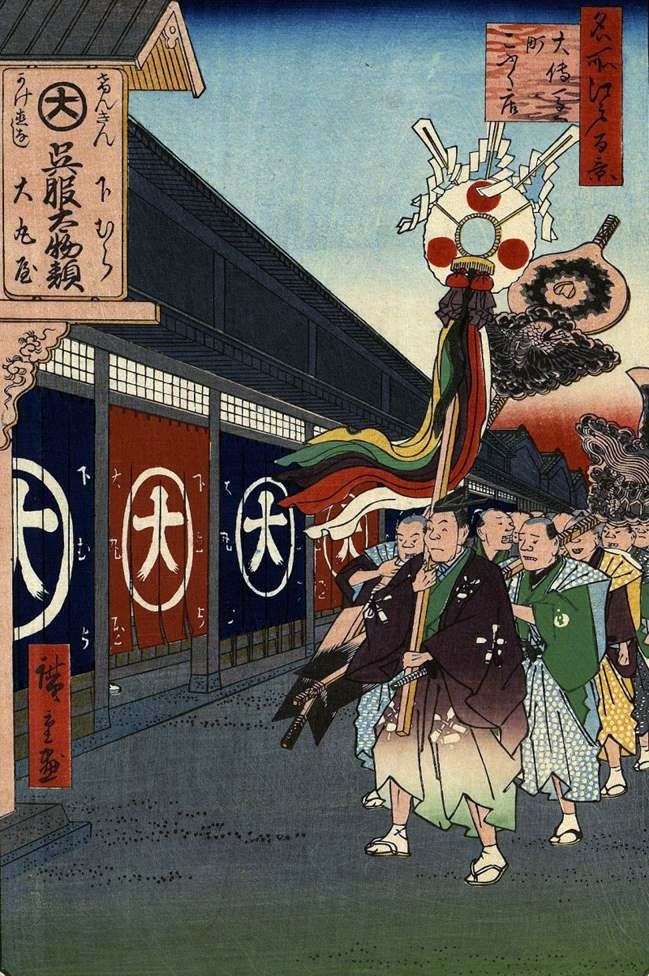
In his works, the characteristic features of the Ukiyo-e landscape receive the most vivid and perfect embodiment.
Already in the early landscape series of Hiroshige, such as “Toto Maysa”, “Tokaido gojusan zugi-nouti” and others, one can clearly see the new that introduced Hiroshige into the Ukiyo-e landscape in comparison with its founder, Hokusai.
Hokusai by character of talent is the least contemplative. In his works he is not satisfied with the direct transmission of the natural motive, as his predecessors-perspectives, but stylizes, generalizes the landscape, achieving its symbolic sound. Often the image of nature recedes into the background before the desire to create an effective, masterfully constructed composition with a philosophical overtones.
In other words, many landscapes of Hokusai represent the embodiment of speculative ideas based on a combination of stylized elements of the depicted terrain.
 Geisha remuant des charbons dans un brasero – Josoda Aisi
Geisha remuant des charbons dans un brasero – Josoda Aisi Geisha revolviendo carbones en una tostadora – Hosoda Esey
Geisha revolviendo carbones en una tostadora – Hosoda Esey Poet Ono-no Komati by Katsushika Hokusai
Poet Ono-no Komati by Katsushika Hokusai The pilgrimage of Torinomati in the fields of Asakusa by Ando Hiroshige
The pilgrimage of Torinomati in the fields of Asakusa by Ando Hiroshige Stores of fabrics in Odemmata by Ando Hiroshige
Stores of fabrics in Odemmata by Ando Hiroshige Portrait of Santo Khedan by Racisanti Airy
Portrait of Santo Khedan by Racisanti Airy Morning mist in Mishima by Ando Hiroshige
Morning mist in Mishima by Ando Hiroshige The Taikobashi Bridge and the Yukhinooka Hill in Meguro by Ando Hiroshige
The Taikobashi Bridge and the Yukhinooka Hill in Meguro by Ando Hiroshige